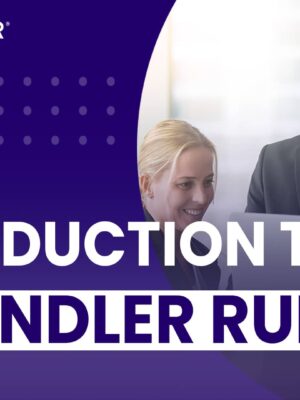Up-Selling & Cross-Selling
To increase the revenue and margins of an order by selling products and services at a higher price – up-selling – or by selling additional products and services – cross-selling, we must be able to prove to the customer that there is something in it for them. We must show them increased added – value.
Value is the worth of something when compared with something else. For example, value would be a high pay back for small outlay, also discussed in terms of ROI (Return on Investment).
Payback is the tangible return delivered by the benefits of your products and services. The greater the payback, the greater the value to your customer – and customers certainly want value.
The Value Formula
The formula for calculating value is the benefit minus the cost of achieving or acquiring the benefit – i.e., value + benefit – cost. So it is important that we use rigorous questioning techniques to uncover as many needs as possible for which we can offer benefit oriented solutions. We need to be able to explain and sell benefits. The more needs we can uncover, the more benefits we can deliver; the more benefits, the greater the payback; the greater the payback, the higher the value; and the higher the value, the better the chance to up-sell and cross-sell.
Proving Value
Using the funnel questioning technique will uncover needs, if they are there to be uncovered. However, it is one thing to uncover the need; it is another thing to prove that there is adequate payback and value in fulfilling the needs.
Having uncovered the needs, we must probe and find out as much as we can about those needs and the implications to the customer if they are not met or fulfilled. We do this by asking past, present and future questions – i.e., “How did you do this before?” (Past), “How do you do this now?” (Present) and “How do you plan to do it?” (Future).
What we are trying to establish is the difference between what the customer used to do, and how it is done now. If we can establish this, then the comparison between what they are presently doing and what they may be able to do, based on our solution, will be easier to grasp. This is important, because the difference between doing something and not doing it is the “value gap.” We need to find value gaps that we can attach a price to, so that we can justify the benefit in terms of added value.
Let’s Take an Example
In the past, your customer utilized a manual stock and inventory system, but using your database for an automated system has enabled them to increase shipments by 20% per day. With the shipments of goods totaling $10,000 per day, the value gap – i.e., system or no system – is $2000 per day. If the system is down, it would cost $200 to $400 in lost or delayed shipments per hour. Staying as they are or going for a support agreement that would reduce down time, is the value gap opportunity. That gap is worth $200 to $400 per hour.
Value Added Arguments
You should always be looking for opportunities to offer more features that will be of benefit by asking the customer to tell you areas in which they would like to see greater support or additional services. If you say “Mr. Smith, we would like you to upgrade to our gold support agreement – you will receive earlier notification of software upgrades,” the usual response will be, “We don’t need them.” It’s far better to use reasoning and ask questions to assist the customer into a position where they enquire about additional services and explain the possible outcome if they did not have those additional services. You then present a value-added argument to fill the gap.
Summary
The best product at the best price does not always win the order. We have all been outsold by a competitive salesperson probably offering less of a solution and sometimes even at a higher price. By selling benefits, and not talking about features, the prospect will understand the payoff that your solution will deliver. Do not leave them to work it out for themselves – they might not bother!
If you can instead identify the need for more services and explain, using benefits, how you can meet those needs, it will be a lot easier to up-sell and
cross-sell.
Copyright © 2020 by Jonathan Farrington All rights reserved. No part of this publication may be reproduced, distributed, or transmitted in any form or by any means without permission of the author.








